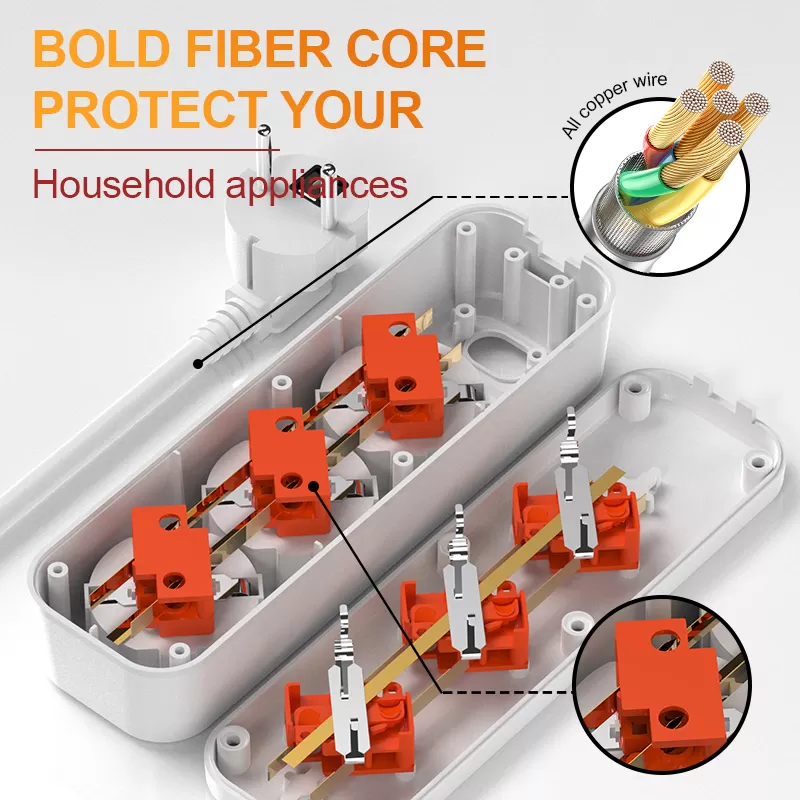1. Overload Protection
Automatically cuts off power when the total current exceeds the rated limit (e.g., 10A/2500W), preventing overheating or fires caused by overloaded circuits.
2. Child Safety Shutters
Protective shutters cover unused sockets, opening only when both prongs of a plug are inserted simultaneously to prevent accidental contact by children.

3. Flame-Retardant Materials
Made of high-temperature-resistant plastics (e.g., PC/ABS) that resist ignition and slow flame spread in case of short circuits.
4. Surge Protection
Absorbs voltage spikes from lightning or power grid fluctuations to protect connected electronics, measured in joules (e.g., 1000J rating).
5. Grounding Wire
The grounding prong (in 3-pin plugs) directs leakage current to the ground, reducing electric shock risks—essential for high-power appliances.
6. Safety Certification Marks
Look for certifications like UL (USA), CE (EU), or CCC (China), indicating compliance with regional safety standards.
7. Automatic Shut-Off Switch
A physical switch allows instant power cutoff, reducing wear and tear from frequent plugging/unplugging.
8. High-Quality Copper Core Cables
Thicker copper wires reduce resistance and overheating; avoid low-cost aluminum-core cables.

Usage Tips for Safety
- Check Voltage Compatibility
Match the power strip’s voltage (e.g., 120V/240V) to your country’s standard. - Avoid Daisy-Chaining
Never plug one power strip into another to prevent overload hazards. - Regular Inspection
Replace the strip immediately if cords are frayed or plugs feel loose.